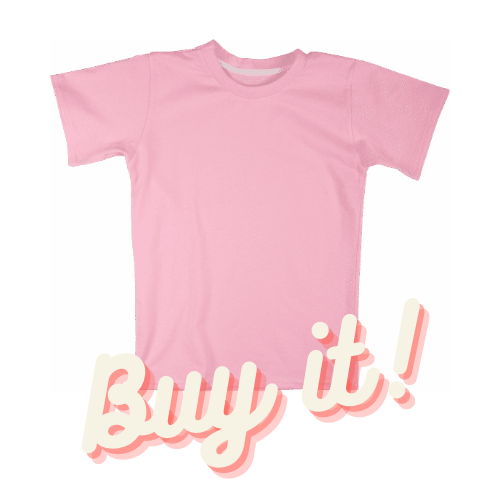7+ PR Tactics With Examples
Steal these tactics for your PR and marketing strategy
Let me tell you a secret: you don't have to have advanced degrees in public relations in order to be smart about how you use PR tactics.
Yeah, I know. It's crazy but true.
The internet has a million amazing tools for learning about how to use PR fundamentals to bolster your marketing efforts. Between PR podcasts, books, blogs (like this one!), YouTube videos, and so much more, you basically never have to step into a classroom to grow your PR skills.
Now, do advanced degrees and training help you excel in PR? Absolutely maybe. But that doesn't mean we can't steal a trick or two from the pros and use them in our own strategic communications campaigns. Right? Right.
And that also doesn't mean we have to spend an arm and a leg to get exposure and coverage.
When executed well, PR tactics help your brand stand out and build a solid reputation.
Often, these strategies involve actively reaching out to the media, creating buzzworthy content, and partnering with influencers. But, as you probably already know, PR isn't always just about getting coverage. It’s also about making genuine connections with your audience and showcasing what your brand is all about.
Whether you’re running a big company or a small business, nailing the right PR tactics can help you grow while leaving a lasting impression, even if you’re working with a tight budget.
Before sharing our list with you, we want to clear up some common confusion around the difference between PR strategy and PR tactics. We see them mixed up frequently, but it's always important to remember that they're not the same thing.
So, what's the difference?
Your PR strategy is the overall game plan. It’s like setting your destination on a map. It answers the big questions: What do you want to achieve? Why is this important? Are you trying to increase brand awareness, change public perception, or engage with your audience?
PR tactics, on the other hand, are the specific actions you take to make that strategy happen. These are the day-to-day moves, like pitching stories, writing press releases, or engaging on social media. If your strategy is the destination, then your tactics are the steps you take to get there.
In a nutshell, strategy is the “what” and “why,” while tactics are the “how.” Without a clear strategy, your tactics might be scattered and ineffective. But without the right tactics, even the best strategy won’t get you where you want to go. Both are essential, and when they work together, they help you hit your PR goals effectively.
It may seem a little simplistic, but creating value for the consumer is a fantastic way to get eyes on your brand.
Say you're trying to come up with a strategy to sell some environmentally conscious clothing. You could say, "we have an eco-friendly clothing brand! Look at our things! Buy our things because we are selling things. Specifically, these things." You could run ads and social media posts simply presenting the items and encouraging people to buy. A simple, time-tested approach.

Or, you can teach something. Put out posts about sustainability and how consumers can be conscious about their environmental footprint. Build resources that make it easy for people to do that. Teach people how to identify hazardous fast-fashion, create a podcast on environmentalism, and build your (intended) audience through conversations about environmental awareness.
When people learn and share, they'll ultimately wonder, "who is this amazing company providing all of these kick-ass resources about the planet?" Then they'll buy your t-shirts. Or maybe they won't. But either way, you're starting conversations, engaging with potential buyers, and making a name for yourself in the sustainable fashion industry.
Teaching tactics can include:
- Building a knowledge base
- Running a podcast where you interview experts in the field
- Creating a course relating to the horrible thing in the world you're trying to fix
There used to be a time in bygone days when people liked the reliability and dependability of huge, sterilized billion-dollar conglomerates. These days, however, people are wary of those types of institutions. It's hard to imagine why, though.
Times are changing and many consumers want to know the faces behind the company.
This is one of the reasons that some brands are absolutely crushing it on social media. They take something pretty meh, like a language app or a juicebox, and turn it into something playful, fun, and human.
Other companies are having massive success by showing the behind-the-scenes magic of running a company. Consumers love seeing companies be people, whether that's office tours, introducing your lovely team, or sharing how the sausage is made (maybe literally, maybe not).
Tactics that can humanize your brand include:
- Featuring team members on the company socials
- Giving one of your team the company Instagram account to run for a day to show their "day in the life"
- A candid email campaign where your founder explains a recent rough patch the company has tackled
Storytelling in marketing has become a huge focus, and a large part of that story revolves around how the consumer not only feels about the companies they use but how they feel about themselves when paying for that product or service. (And, not to toot our own horn, but brand storytelling is kind of Prezly's whole thing.)
If you want more tips and tricks about telling an awesome brand story:
- Brand storytelling is more important than ever. But what is it?
- What are the components & elements of good storytelling in business?
- 11 legendary examples in corporate & business storytelling
We all want pearls of wisdom from knowledgeable people. Regardless of your industry, odds are you or someone in your agency can share a few bits of knowledge about… something. After all, if they're employed to do a thing, chances are that someone, somewhere believes they know what they're doing.
Obviously, with any company, the goal is to sell, gain exposure, increase revenue, etc. But in an increasingly global market, companies are struggling to cut through the noise and competition to even get a few seconds of consumers' time. This is where the power of thought leadership comes in. If you can market yourself as an industry pro, people will naturally gravitate towards you and your product or service.
Tactics that can grow your reputation as a thought leader include:
- Blogging about your field (long-term – don't expect results straight off the bat)
- Creating and freely sharing resources that help others without asking for anything in return
- Appearing on podcasts in the space
Services like HARO and Qwoted, and Twitter hashtags like #journorequest are a great start for becoming the thought-leader wizard of your industry.
Being active in your niche's various communities is a great way to stay up-to-date on trends, network, and share your expertise. It can also be an effective way to get your brand's name out there, as long as you aren't aggressively and obnoxiously self-promotional (which, let's be honest, happens a lot (have you tried our free trial?)).
For this tactic, take advantage of platforms with ready-made communities, such as:
- Discord
- Substack
- X Communities
- Facebook Groups
- Medium
- Slack
With media going increasingly social and exposure playing slave to the algorithms, it's no surprise that we're in an age of rage bait. Rage bait is basically using contrived controversy to push conversation, engagement, and exposure for a brand or product. It's effective but also cheap, annoying, and quickly becoming tiresome for consumers.
Your marketing strategy should never intentionally make people angry for the sake of engagement.
But you can be an antagonist.
An industry antagonist is someone who takes the status quo and challenges it in interesting ways. It's a controversial message with a purpose. It says, "this isn't working in our field, and we're calling out the BS."
Sure, you might make enemies of your competitors. But tbh, they probably didn't like you that much to begin with.
Some examples of industry antagonism tactics:
- Call out your competitor's ingredients. Are they using components that are harmful, unsustainable, or even toxic? Do a side-by-side comparison between your product and theirs (check out our Prezly competitors pages)
- Challenge the pricing model. Who in your niche is bloating their pricing? Call them on it
- Be a whistleblower. Are there unethical or immoral practices happening in your industry? Call it out
Yes, this article is about inexpensive strategies, and there are influencers that can go for hundreds of thousands for a measly post. Which is insane, frankly.
However, there are plenty of small creators in highly specific niches that can reach a loyal audience without costing your firstborn or your company a year of profits (whichever is cheapest).
Influencers build their followers by being trustworthy, personable, and engaging. With the right campaign, you can leverage that following and create a great relationship with someone who ultimately acts like your spokesperson.
To learn more about influencer marketing, read these articles:
- What is influencer marketing?
- Influencer marketing campaign examples
- How to reach influencers as a brand or small business to promote your product
The great thing about social media is that it is a direct link between you and your audience. It can be an inexpensive, effective, and authentic way to create a conversation with the people who love your brand and the people you want to love your brand.
In theory.
In reality, it can be difficult for brands to make a genuine connection to audiences via social media. This can be because social media moves remarkably quickly, and trends change faster than you can say "hashtag". It can also be because you handed the company iPhone to Jasper, who still prefers phone calls over emails and has never seen the point of those "Snappity Snaps", and asked him to make your founder thought-leadership piece on the importance of spreadsheets go viral. It could be many reasons.
When done right, a social media press release could be a great tool for your communications and marketing campaigns.
And while you can't control the algorithms (which are constantly changing and endlessly infuriating), you can create a consistent message that tells your brand story in a way that reflects your company culture.

We at Prezly talk a lot about building media relationships because it works. Too many PR and marketing people are relying on the "spray and pray" method of gaining exposure, but these are ineffective at best and annoying at worst.
Building media relations is both free and incredibly effective. Here are some ways to get started on building those media connections:
- Think of how you can provide value. Instead of asking how a journalist can help you, think about how you can help them. They'll want to keep working
- Engage with their content. If you're featured in the journalist's publication, share their stuff. In the same way that you need coverage, they need viewers
- Don't be pushy. Being a buzzing fly in the inbox of your potential journalist friend is a great way to go from a collaborator to an annoyance
- Be friendly. This is a no-brainer, but it's baffling how many people skip right past the whole "personable" part of building relationships with journalists. No, you don't need to be besties, but building those relationships and having friendly conversations is key to building great industry relationships. Plus, people are naturally more interested in supporting people they like
You don't need to spend a ton of money or go to a fancy PR school to use these awesome, inexpensive, and effective PR strategies. As long as you're committed to thinking strategically and trying out different techniques (while building great relationships along the way), your brand will get in front of the right eyes.
With Prezly, we've designed an all-in-one platform for you to easily implement all 8 of these tactics, too. Start with a 14-day free trial (no credit card needed to sign up) and try it out for yourself!
Ready to start growing your media reach?
With Prezly you can publish press releases online, and share them directly with journalists. 14-day free trial, no credit card required.




